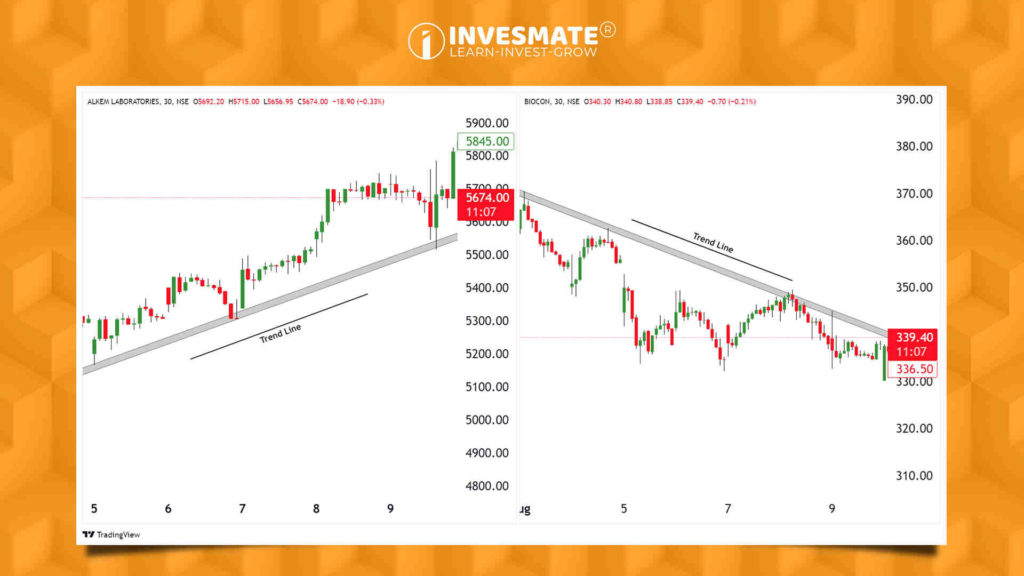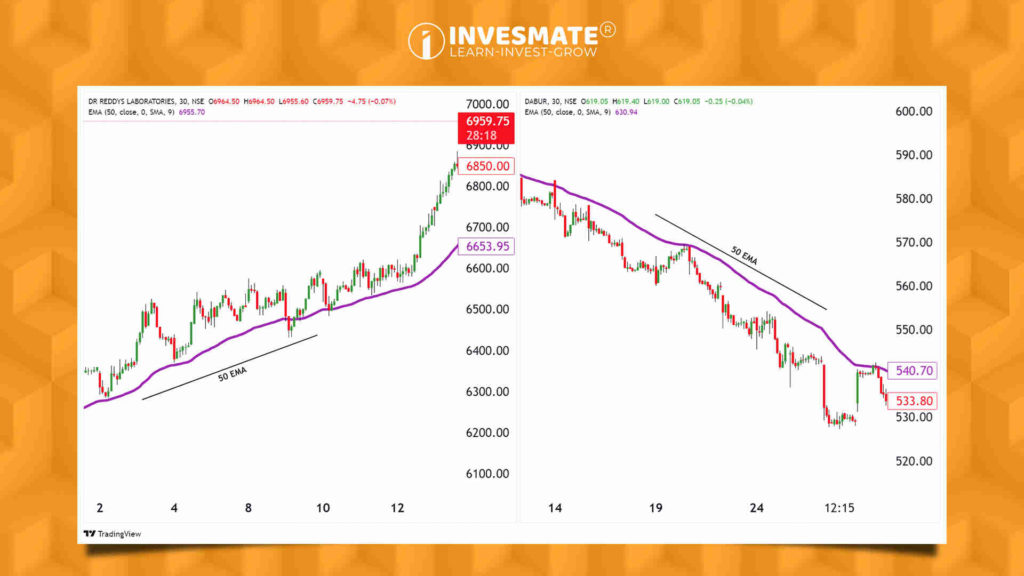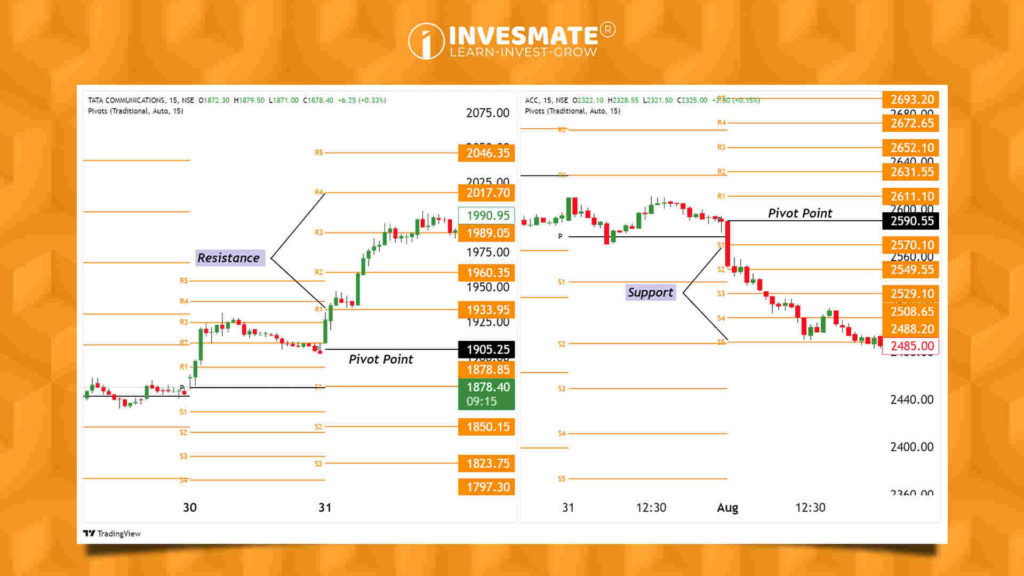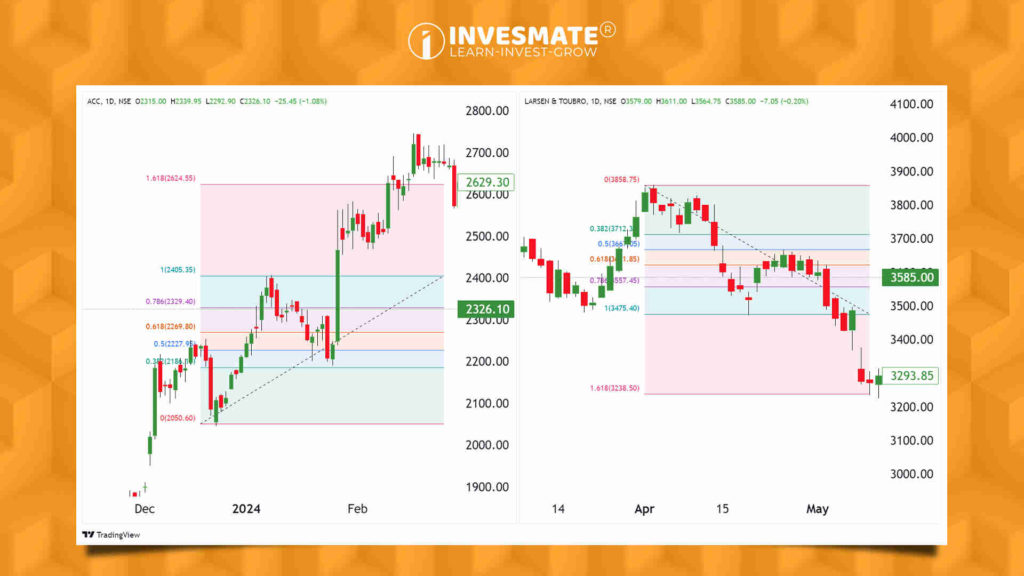Understanding and analyzing Stock Price Patterns is very important in terms of trading in the Stock Market. By studying trends, investors and traders can assess whether market conditions support their positions and for how long. This helps them pinpoint entry and exit points; support and resistance are key concepts in this context.
This blog will simplify the concepts of Support and Resistance and help give you a good starting point for your trading journey.
What is Support?
Support is a price level where a stock finds buying interest, preventing it from falling further. It acts like a floor where the stock price often bounces back, helping traders identify potential buying opportunities.
Example:
Imagine a stock is trading between Rs.40 to Rs.50 and then stabilizes at Rs.40. This Rs. 40 Level is considered as a Support Level, because Buyers are consistently coming to purchase the stock at this price and creating a Demand that prevents the price from dropping further.
What is Resistance?
Resistance is a price level where a stock faces selling interest, preventing it from rising further. It acts like a ceiling, causing the stock price to fall back. Recognizing resistance helps traders identify potential exit points.
Example:
Imagine a stock trading between Rs.90 to Rs.100, but struggling to rise above Rs.100. Every time it reaches this level, selling pressure increases and the price falls again. This Rs.100 level is considered as a resistance level as sellers consistently step in at this price, increasing supply and preventing the price from rising further.
Indicators and Strategies Using Support and Resistance Levels
Support and resistance levels are essential in various technical analysis indicators and strategies. Here are some examples:
Trend Lines
Trend lines help identify the direction of a stock’s trend. A trend line connecting a series of higher lows acts as a support level. Conversely, a trend line connecting a series of lower highs acts as a resistance level.
Moving Averages
Moving averages smooth out price data to show the overall trend of a stock. When the price is above the moving average, it can serve as a support level. When the price is below the moving average, it acts as a resistance level.
Breakout Strategies
Breakout strategies aim to profit from price movements, especially when a stock breaks key support or resistance levels. Traders often wait for a price with high trading volume before making a breakout trade.
Pivot Points
Pivot points are horizontal support and resistance levels calculated from the previous day’s price action. Traders use these levels to identify potential entry and exit points for their trades.
Tools for Identifying Support and Resistance
Here are a few tools that can help you find support and resistance levels in the stock market:
Fibonacci Levels
- Fibonacci Retracements: These Fibonacci Retracements are very helpful in finding good entry points during market pullbacks. In an uptrend, retracement lines act as support, and in a downtrend, they act as resistance.
- Fibonacci Extensions: These help determine target points in a trending market. In an uptrend, extension lines indicate resistance, and in a downtrend, they indicate support.
Peaks and Troughs
This simple method involves marking the highs and lows on a chart,
- Higher highs and lower highs indicate resistance levels,
- While lower lows and higher lows indicate support levels. Using longer timeframes makes these levels more reliable.
Conclusion
Support and resistance levels are crucial for building a successful trading portfolio. Understanding these concepts is essential for effective trading. Traders can utilize modern stock scanners to analyze support and resistance levels, helping them determine optimal entry and exit points.
FAQs
They help traders identify potential entry (support) and exit (resistance) points, improving trading decisions.
When a support level is broken, it becomes a resistance level, and vice versa. This indicates a shift in the balance of supply and demand, leading to new levels of support and resistance being established.
Trend lines connect peaks or troughs to identify support and resistance, while moving averages indicate dynamic support and resistance levels.












Leave a Reply